Pupils have long been encouraged to supplement their learning outside of the classroom. With only so much time and focus you can give to your class, it’s important you’re able to lean on modern technology to deliver education away from your instruction.
The availability of digital technology means blended learning, the combination of in-class and out-class learning, is now easier than ever.
For teachers looking to introduce blended learning, or just to know more about it, we discuss the six most popular models. In this guide we’ll show you how each one works so you can choose the best for your pupils.
Models of blended learning
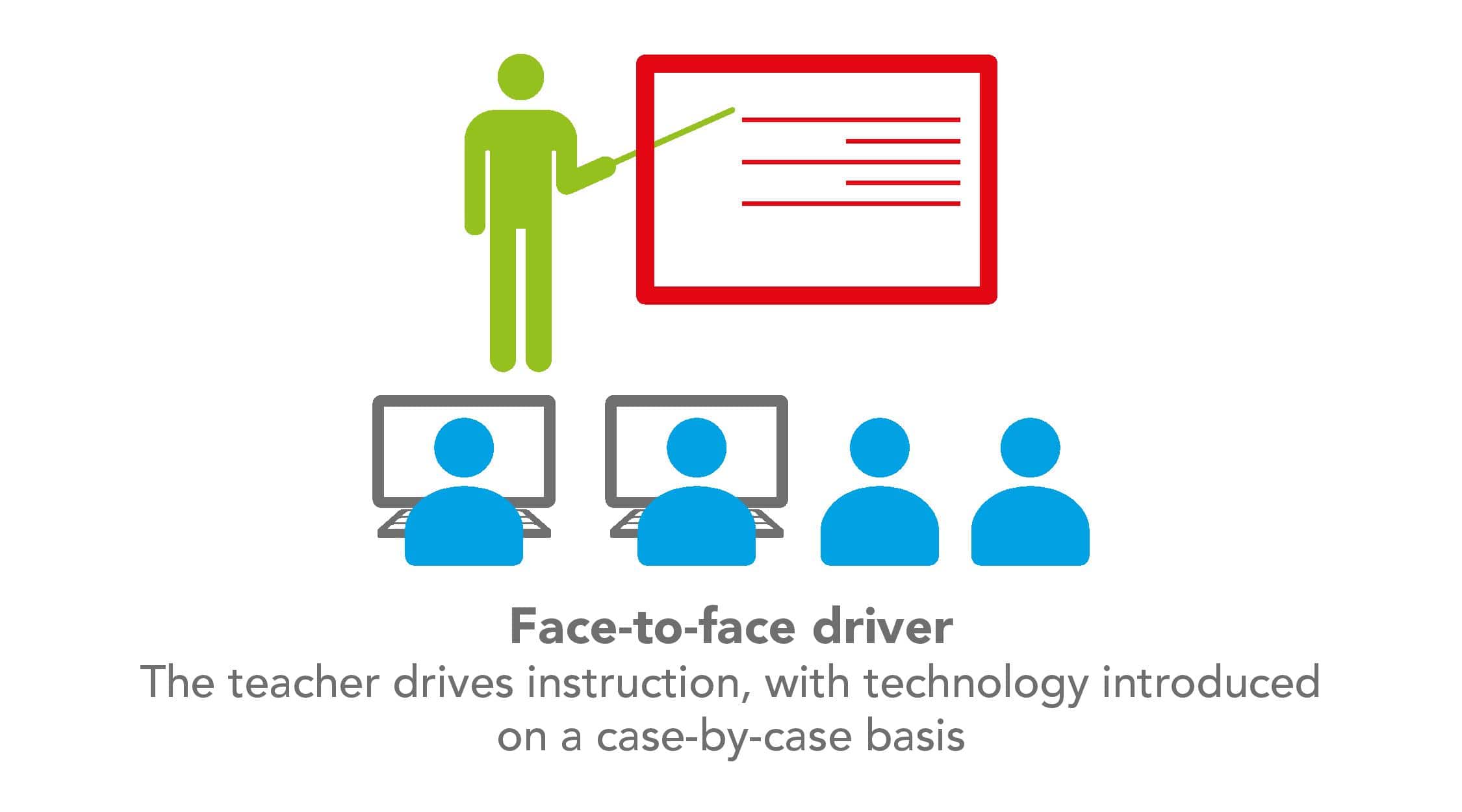
Also known as mastery-based blended learning, face-to-face driver is predominantly based in the physical classroom. Instruction is done as normal by the teacher, with technology introduced based on the progress of each pupil.
This model allows each child to work at their own pace, able to lean on elements of online learning if they are taking longer than the rest of the class to master a subject. Some pupils may never interact with online learning, but under the face-to-face driver model they can proceed at a rapid pace without being held back by other pupils.
Mastery-based blended learning helps teachers use their most precious commodity more wisely – time. Pupils can focus on the area of learning they are currently at, rather than pushing the whole class through subject material at the same pace regardless of each individual’s level of mastery. It’s perfect for differentiation.
The most significant drawback of this model of blended learning is up-to-date data. Teachers must be constantly aware of each pupil’s progression, allowing you to move them through the subject matter as they show proficiency in each topic.
What flex is good for
- Classrooms in which pupils need highly flexible, individual tailored instruction, and may be considered at-risk
2. Flex
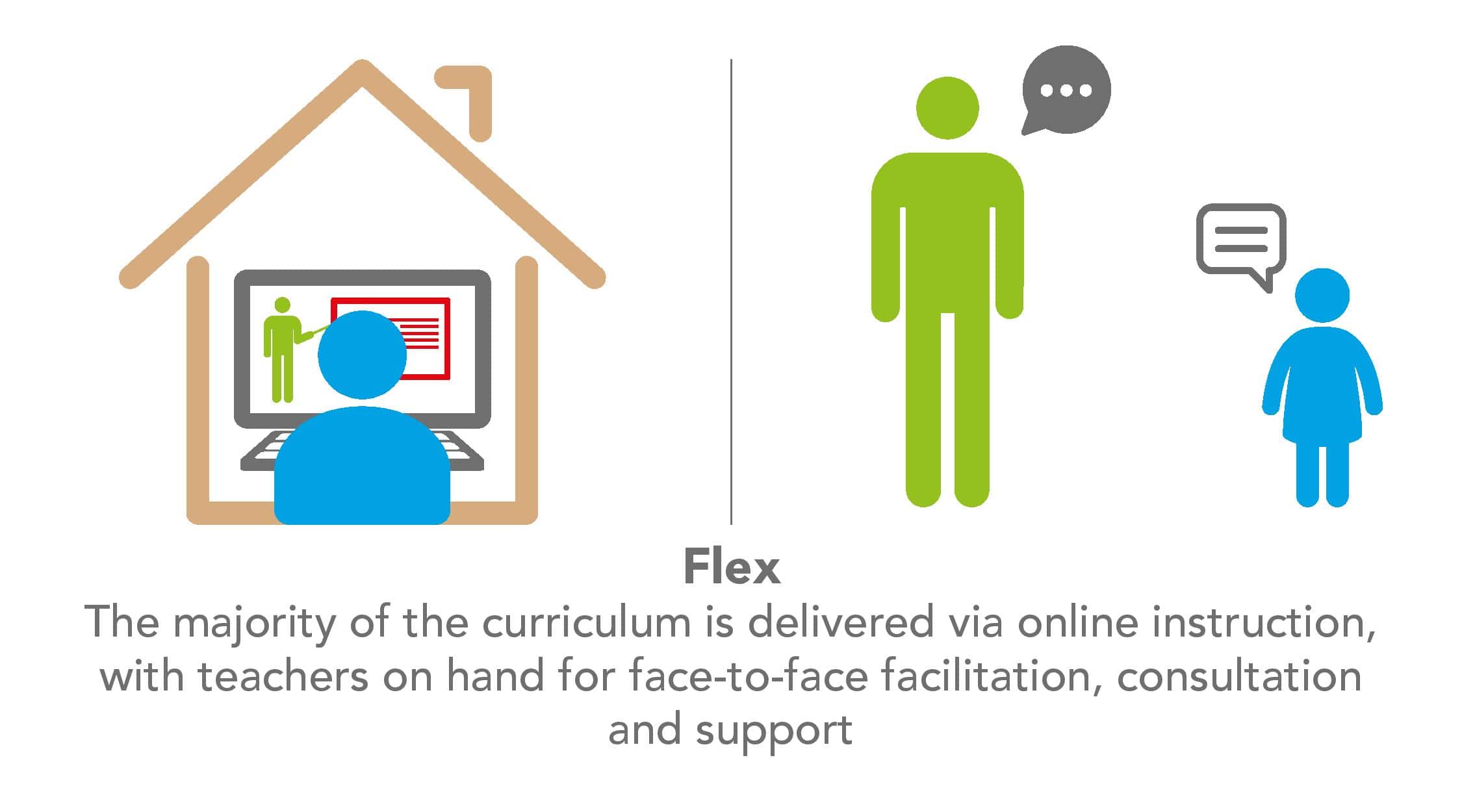
The flex model will seem a little unusual to most teachers and is of not often found in a traditional classroom setting. The flex model relies heavily on online instruction, even though much of it is delivered in a physical bricks and mortar school.
In this model teachers act more as facilitators, providing supplementary support rather than dedicated instruction. Their role does involve some offline activity, including face-to-face support, small group instruction or individual tutoring.
Within the flex model, pupils can move flexibly through a subject at their pace, independent from other pupils in the class. This allows for a tailored approach that targets the needs of each pupil. That’s why we often see the flex model adopted in classes where pupils are considered at-risk.
What flex is good for
- Classrooms in which pupils need highly flexible, individual tailored instruction, and may be considered at-risk
3. Rotation

Pretty much every teacher will be familiar with the rotation model of blended learning. The principles of this model have been around for years. A series of stations are setup which tackle a different topic area or approach learning from a different angle. Pupils then work their way round the stations to allow everyone some exposure to each area: a carousel of activities.
The rotation model becomes a blended learning experience when at least one of the stations makes use of technology. Traditional stations might include teacher-led instruction, group activity or experiments. Technology-based stations might include online instruction, interactive games or quizzes, or informational videos.
Given how the majority of teachers are comfortable with this model, it’s one of the easiest to setup in any classroom environment. It also helps to lower the student to teacher ratio. However, there are some challenges. Extra stations takes up more valuable teacher preparation time, and you need to have more than one teacher who is confident with the material to deliver at a station.
What rotation is good for
- The easiest and more recognisable way to introduce blended learning
4. Online lab
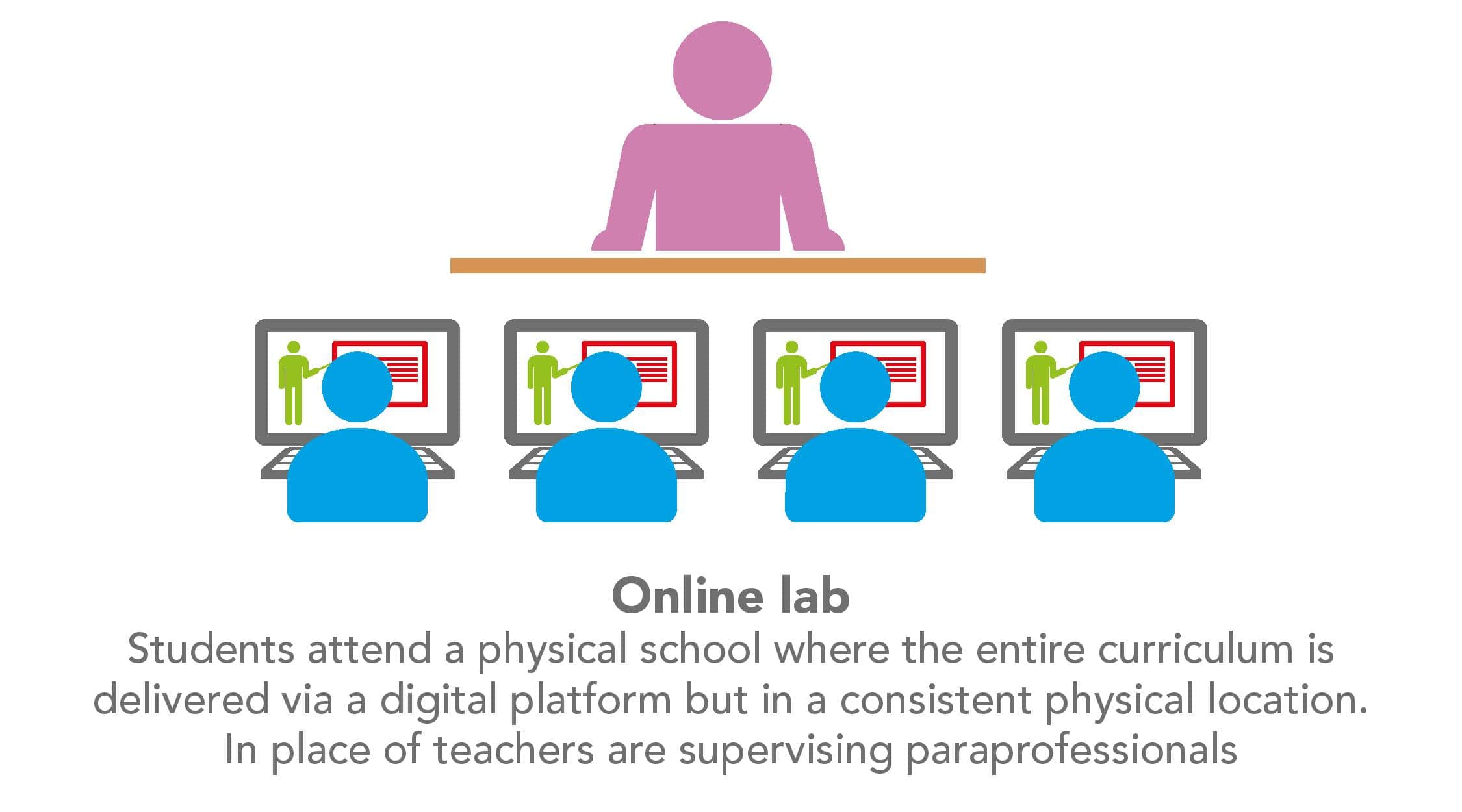
In the online lab model, education is delivered entirely online but done so in physical bricks-and-mortar classrooms. Pupils still have the physical classroom environment, but it is transformed into a technologically-based one. There are no qualified teachers, instead paraprofessionals who supervise and help out when they can.
This method is known to be used by schools across the world that have especially tight budgetary constraints. It can also help any students that need to move at a different pace to their classmates. As all courses are delivered online, students are able to move through the curriculum at their own pace, with no one left behind or stuck waiting to progress.
What online lab is good for
- Allowing schools to offer courses they have no dedicated teacher of, and students to move at a different pace to other students their age
5. Online driver
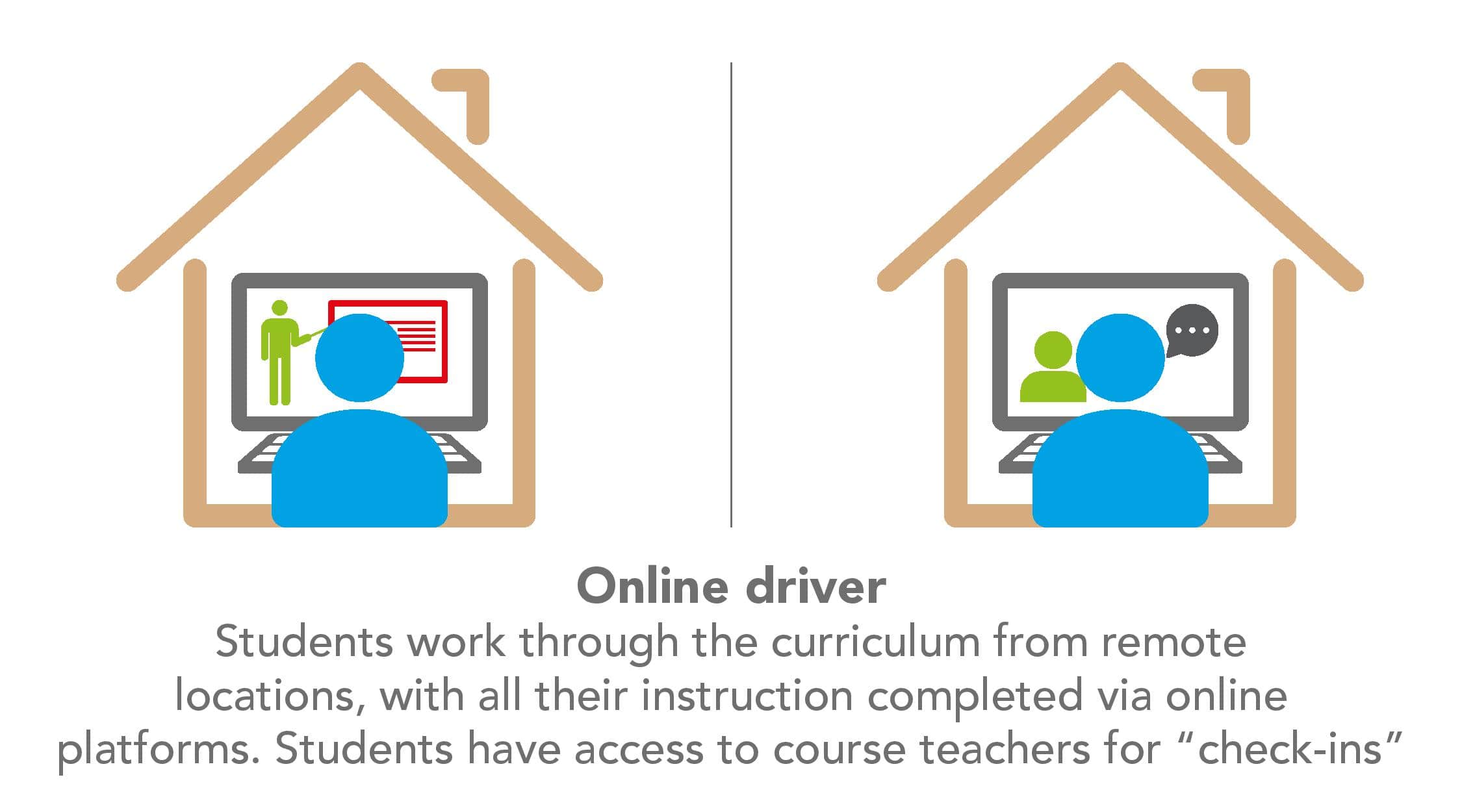
Given the rise of modern technologies like video conferencing and online learning platforms, the online driver model may well be how schools operate in the future. In this kind of blended learning, the traditional face-to-face, physical classroom instruction is done in favour of online instruction. Pupils work remotely to complete all their work, with teachers available for online messaging to ask questions or clear up difficulties.
You’re unlikely to see this model in younger, primary education, as children require more face-to-face instruction and benefit from all the social aspects of attending a school. The online driver is more suited to mature students who require the flexibility to not have to attend a physical location at all.
What online driver is good for
- Adapting to the modern world for flexible, remote learning online
6. Self-blend
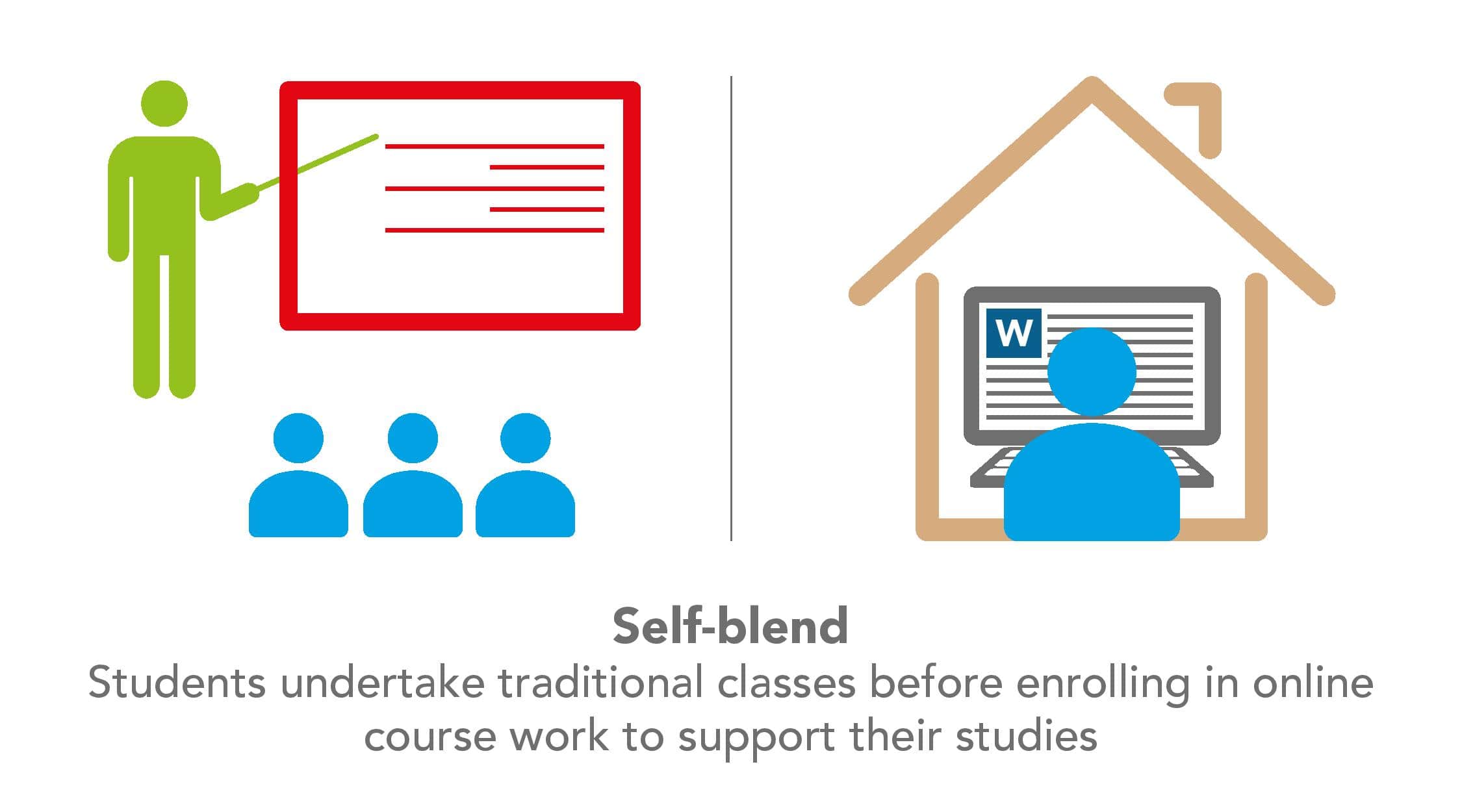
The self-blend model won’t apply to many younger pupils or primary school children (unless a parent is involved in the process), but it becomes more recognisable as pupils move into secondary education and beyond.
In self-blend blended learning, pupils participate in traditional instruction in a physical classroom in the same way we are all accustomed. Pupils will then supplement their learning online with additional courses or online instruction. This is done at the discretion of the individual pupil, which is why it’s more likely to be done by older, independent and motived students.
The way self-blend works leads to obvious drawbacks. If students aren’t motivated or willing to put the time into extra study outside of the classroom, they won’t get the benefits of blended learning.
What self-blend is good for
- Older, independent and motivated students who want to expand their knowledge and skills
Other types of blended learning
The six above are the most significant models of blended learning, but there are lots of others in use:
- Flipped classroom
Pupils are introduced to a topic or subject online at home, before in-class instruction expands on the area in school.
- Enriched virtual
Work is completed predominantly online, although pupils will also attend some face-to-face sessions within the school on an irregular basis.
- Outside-in
School is considered to the final part of the learning experience. Before then, pupils access their education online.
- Labs
Much like the rotation model, however the online station makes use of a dedicated computer lab.